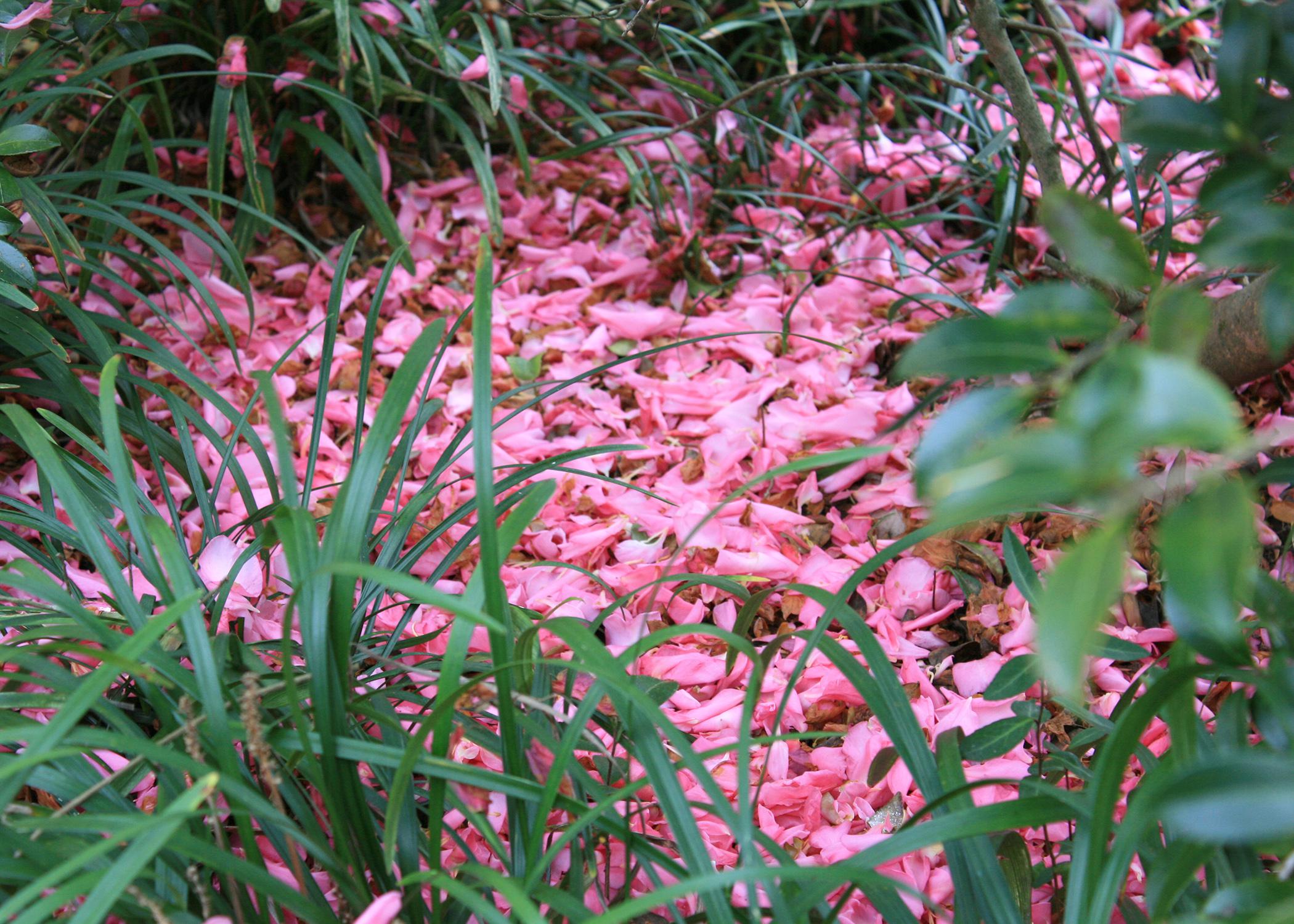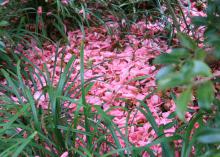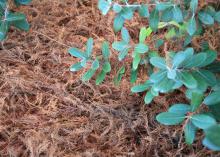Information Possibly Outdated
The information presented on this page was originally released on December 8, 2014. It may not be outdated, but please search our site for more current information. If you plan to quote or reference this information in a publication, please check with the Extension specialist or author before proceeding.
Naturally occurring mulch can be pretty and useful
In December, many gardeners look forward to taking a little time off from working in the landscape, but cool weather is a good time to apply a layer of mulch.
However, gardeners get some free help with the job at this time of year. I’m always in awe of the job that Mother Nature does mulching the landscape.
If you are fortunate enough to have camellias in your landscape, you get a double treat. The flowers, of course, are the main show from late fall to early spring, but if you’re patient and lucky, you get another colorful treat. As the flower petals fall, they create a vibrant mulch from pure white to rosy pinks and bright reds, depending on the variety.
Another example of Mother Nature’s mulching can be found under bald cypress trees in late fall. The plantings we have at Mississippi State University’s Coastal Research and Extension Center in Biloxi are outstanding. The summer foliage is a light-green color that changes to a golden, rusty brown before falling off in the winter. This fallen foliage creates a finely textured, feathery layer of mulch.
As much as I like this tree, I won’t promote it for the normal home landscape; it just gets too big and those cypress “knees” pop up everywhere, creating maintenance issues. But if you have these trees in your landscape, you can enjoy the natural mulch they shed each year.
While these naturally occurring materials may not be as effective as traditional mulching products, they sure do look good in the native landscape.
If you need a more substantial mulch for winter protection, you will need to add some materials. Whether you are an experienced gardener or have a brown thumb, you can mulch like a pro.
Organic mulches are great in helping conserve moisture in the summer. With mulch, soil temperatures are lower in the summer and higher in the winter. Organic mulch also breaks down and helps build up the soil. Since they do decompose, organic mulches have to be replenished every year or two.
Classic organic mulches include pine straw, bark and shredded leaves. Specialty organic mulches include coir chunks or pecan shells.
Here are some tips that will help you mulch like a pro. Start by always removing any weeds and treat the area with a preemergence herbicide before applying mulch to any part of the landscape.
When applying mulch, try to keep the depth at the recommended 2 to 3 inches to help maintain moisture and control weeds.
Mulching too heavily can lead to the formation of mulch “volcanoes” around the bases trees. When a thick layer of mulch is spread around the trunk of a tree several things can happen, and they are all bad. The mulch will indeed hold moisture, but it will sit around the tree trunk. These moist conditions allow the bark to decay, allowing fungi, bacteria and insects to get under the bark and cause problems internally for the tree.
So if you didn’t mulch as well as you should have this summer, now is the perfect time to apply a layer to your garden. Remember, it’s only going to get hot again.









